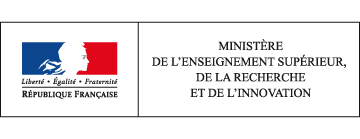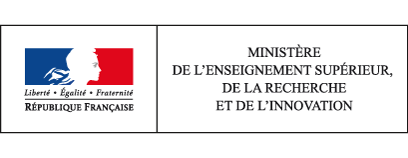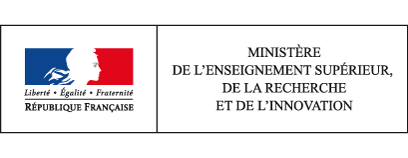44 technological innovation and public sector research
Between 2010 and 2012, 37% of companies with at least 10 employees in the sectors of industry, wholesale trade, transport, information-communication, scientific and technical or financial activities implemented technological innovations. Of these, seven out of ten were engaged in R&D activities. In addition, 14% of technologically-innovative companies were in partnership with the public research sector, contributing 70% of intramural R&D expenditure by these companies in 2012.
From 2010 to 2012, in the sectors of industry, wholesale trade, transport, information-communication, scientific and technical activities and financial activities, 37% of commercial companies based in France with 10 or more employees implemented technological innovations (chart 44.01), i.e. they introduced a new product or a new process onto the market or carried out activities to produce a new product or process. For 10% of companies, their innovation involved only a product, for 10% only a process, for 14% both product and process and 3% undertook work with the aim of producing a product or process innovation, but without bringing a new product or process onto the market. The most innovating sector in technological terms was that of information and communication: 54% of companies in this sector produced a technological innovation between 2010 and 2012. The proportion of innovative companies increased with their size, from 32% of companies with 10 to 19 employees to 70% of those with 250 employees or more.
Seven out of ten technologically-innovative companies were involved in R&D activities during the period in question (chart 44.02). This percentage was over 80% in companies with 250 or more employees and in the information and communication sector and also in the scientific and technical activities sector. It was a little higher than average in industry but lower in other sectors, especially transport and storage (27%).
Between 2010 and 2012, 14% of technologically-innovative companies developed a partnership with the public research sector as part of these innovations: 6% only with a university or other higher education institution, 2% only with a public R&D body (or a private not-for-profit institution) and 6% with both types of institution (chart 44.03). In contrast, 86% did not cooperate with these institutions as part of their innovation activities. This link was stronger in the scientific and technical activities sector (29%), weaker in wholesale trade (8%) and very weak in transport and storage (2%), a sector with very little R&D. Companies with more than 250 employees also had more frequent links than the others with public research (36%). When sector and size were the same, innovative companies with an international presence, and especially those with a product innovation that was new to the world market (15% of technologically-innovative companies), more often developed partnerships with public research: 35% entered into a public partnership. Companies that did have partners in public research were twice as likely as other companies to receive public financial support for their innovating activities (89%, compared with 43%). Virtually all of them carried out R&D activities, whereas this was the case for only two thirds of other companies.
Companies with partners in public research, which were already more likely to carry out R&D than other companies, spent considerably more on their R&D. They made up 20% of technologically-innovative companies carrying out R&D between 2010 and 2012, but contributed 71% of intramural R&D expenditure by these companies in 2012 (chart 44.04).
How to cite this paper :
close
Key figures
Metropolitan France + overseas departments
Metropolitan France + overseas departments
Metropolitan France + overseas departments
44.01 Breakdown of companies in terms of technological innovation from 2010 to 2012 (%)
1 Among companies that were not technologically innovative, some may be innovative in organisation or in marketing.
Between 2010 and 2012, 37% of companies with 10 or more employees were technologically innovative, 10% were only product innovative, 10% only process innovative, 14% were both product and process innovative, 3% performed activities in order to be product or process innovative but did not bring any new product or process onto the market during the period under consideration.
You can embed this chart to your website or your blog by copying the HTML code and pasting it into the source code of your website / blog:
close
44.02 Share of technologically-innovative companies carrying out R&D activities from 2010 to 2012 (%)
Between 2010 and 2012, 71% of technologically-innovative companies with 10 or more employees performed R&D activities.
You can embed this chart to your website or your blog by copying the HTML code and pasting it into the source code of your website / blog:
close
44.03 Share of technologically-innovative companies in partnership with public research (%)
Between 2010 and 2012, 14% of technologically-innovative companies with 10 or more employees developed a partnership with public research for this type of innovation: 6% only with a higher education institution, 2% only with a public or private not-for-profit R&D organisation and 6% with both types of partner.
You can embed this chart to your website or your blog by copying the HTML code and pasting it into the source code of your website / blog:
close
44.04 Share of companies in partnership with public research in intramural R&D expenditure by technologically-innovative companies in 2012 (%)
In 2012, 71% of intramural R&D expenditure by technologically innovative companies was by companies in partnership with public research.
You can embed this chart to your website or your blog by copying the HTML code and pasting it into the source code of your website / blog:
close
Related statistical publication
 Insee Première 1521 - Exporting companies are more innovative than the others - Jean-Luc Tavernier, Emmanuelle Nauze-Fichet, Xavier Besnard - October 2014
Insee Première 1521 - Exporting companies are more innovative than the others - Jean-Luc Tavernier, Emmanuelle Nauze-Fichet, Xavier Besnard - October 2014 Translation
 Etat de l'enseignement supérieur et de la rechercheL'état de l'Enseignement supérieur et de la Recherche en France n°8 - juin 2015
Etat de l'enseignement supérieur et de la rechercheL'état de l'Enseignement supérieur et de la Recherche en France n°8 - juin 201544 - innovation technologique et recherche publique - Joëlle Chazal




